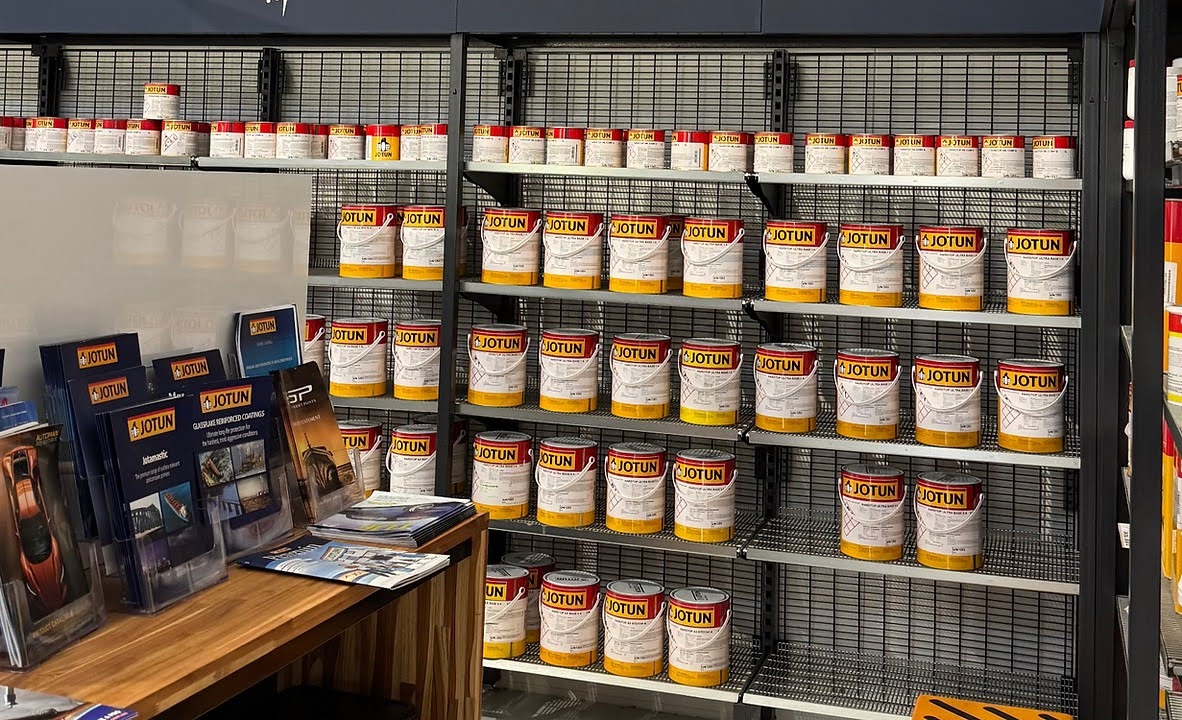Choosing the Right Industrial Paints for Australian Commercial Projects
In Australia’s demanding commercial landscape, choosing the right industrial paint is more than a design choice it’s a matter of functionality, safety, and long-term durability. From warehouses to coastal manufacturing plants, Australian businesses must select coatings that can withstand extreme weather, UV exposure, salt corrosion, and heavy-duty industrial use.
Given the country’s diverse climate zones—from tropical humidity in the north to dry desert heat in the interior and salt-laden air along coastal regions—Australian commercial projects require paint solutions tailored to these specific environmental pressures. That’s where high-performance industrial paints come in, delivering both protection and longevity.
Types of Industrial Paints for Australian Projects
Different commercial environments demand specialized coatings. Here are some of the most common and essential types used across Australian industries:
- Anti-Corrosion Paints: These are essential for protecting metal structures such as bridges, pipelines, or structural frames. Australia’s humidity and salt-laden air can rapidly degrade untreated metals, making corrosion-resistant coatings a top priority.
- Marine-Grade Coatings: In coastal cities like Sydney, Perth, and Brisbane, marine-grade paints offer superior resistance to salt spray and moisture. These are widely used in docks, shipyards, and ocean-adjacent facilities.
- High-Temperature Resistant Paints: In industries like mining or heavy manufacturing, machinery and surfaces can get extremely hot. These heat-resistant coatings maintain their integrity even under sustained high temperatures.
- Floor Coatings: Industrial floor paints for warehouses, factories, and workshops must withstand foot traffic, heavy equipment, and spills. Epoxy-based options are especially popular for their durability and cleanability.
For Australian businesses seeking performance and value, understanding these paint types is the first step toward a resilient, cost-effective commercial solution.
Selecting the Right Industrial Paint
When choosing a paint system for your commercial project, consider the environmental exposure, the substrate material, expected wear and tear, and compliance with industry regulations.
- Environmental Suitability: A paint that performs well in dry inland areas may fail in coastal or tropical regions. Always align the product with the project’s location and exposure risks.
- Surface Type and Compatibility: Concrete, steel, aluminum, and wood all require different preparation techniques and primer compatibility.
- Cost vs. Longevity: While premium coatings may seem expensive up front, their durability and lower maintenance needs can offer better long-term value.
For comprehensive options tailored to Australian conditions, SeaCraft Paints offers specialized industrial paints designed for local commercial needs. Their product range is engineered to meet strict performance standards in the country’s most challenging environments.
Application Tips for Australian Conditions
Applying industrial paints properly is just as important as selecting the right product. In Australia’s climate, improper application can lead to blistering, premature peeling, or structural failure.
- Heat & Humidity: Avoid painting during extreme heat or high humidity, as these can impact drying times and finish quality. Early morning or late afternoon applications are ideal in warmer months.
- Surface Preparation: Proper cleaning, degreasing, and sanding of the surface ensure better adhesion. For metals, sandblasting or priming is often necessary to prevent corrosion.
- Professional vs. DIY: While smaller projects might allow for in-house application, larger-scale industrial sites benefit from experienced professionals who understand local safety regulations, equipment use, and optimal layering techniques.
By following best practices, businesses can extend the life of their coatings and minimize downtime due to repainting or repairs.
Maintenance and Longevity
Even the highest-quality paint systems need routine checks and upkeep. In Australia’s harsh weather, proactive maintenance helps ensure both aesthetic appeal and functional protection.
- Routine Inspections: Conduct periodic visual inspections for cracks, blistering, or rust. Address minor issues before they worsen.
- Cleaning: Remove dirt, salt residue, or chemical spills that could deteriorate the paint surface. Pressure washing or chemical-safe cleaners are typically effective.
- Reapplication Timeline: Depending on the paint type and exposure, recoating may be needed every 5–10 years. Coastal or high-traffic areas may require more frequent maintenance.
Maintenance schedules not only preserve the structure but also comply with industry standards, particularly in regulated industries like food production, healthcare, or mining.
Conclusion
Industrial paints play a vital role in the protection, functionality, and aesthetics of commercial properties across Australia. From anti-corrosive coatings for metal infrastructure to marine-grade solutions for coastal facilities, the right product ensures longevity and reduces long-term costs.
Choosing the appropriate coating means evaluating environmental exposure, surface materials, and maintenance capabilities. Companies like SeaCraft Paints simplify this process by offering a wide range of industrial paints developed specifically for Australian commercial conditions.
Investing in quality paint systems not only protects physical assets but also enhances operational efficiency and brand image. With the right approach, Australian businesses can ensure their facilities remain durable, compliant, and visually impressive for years to come.

